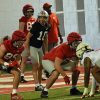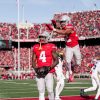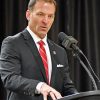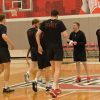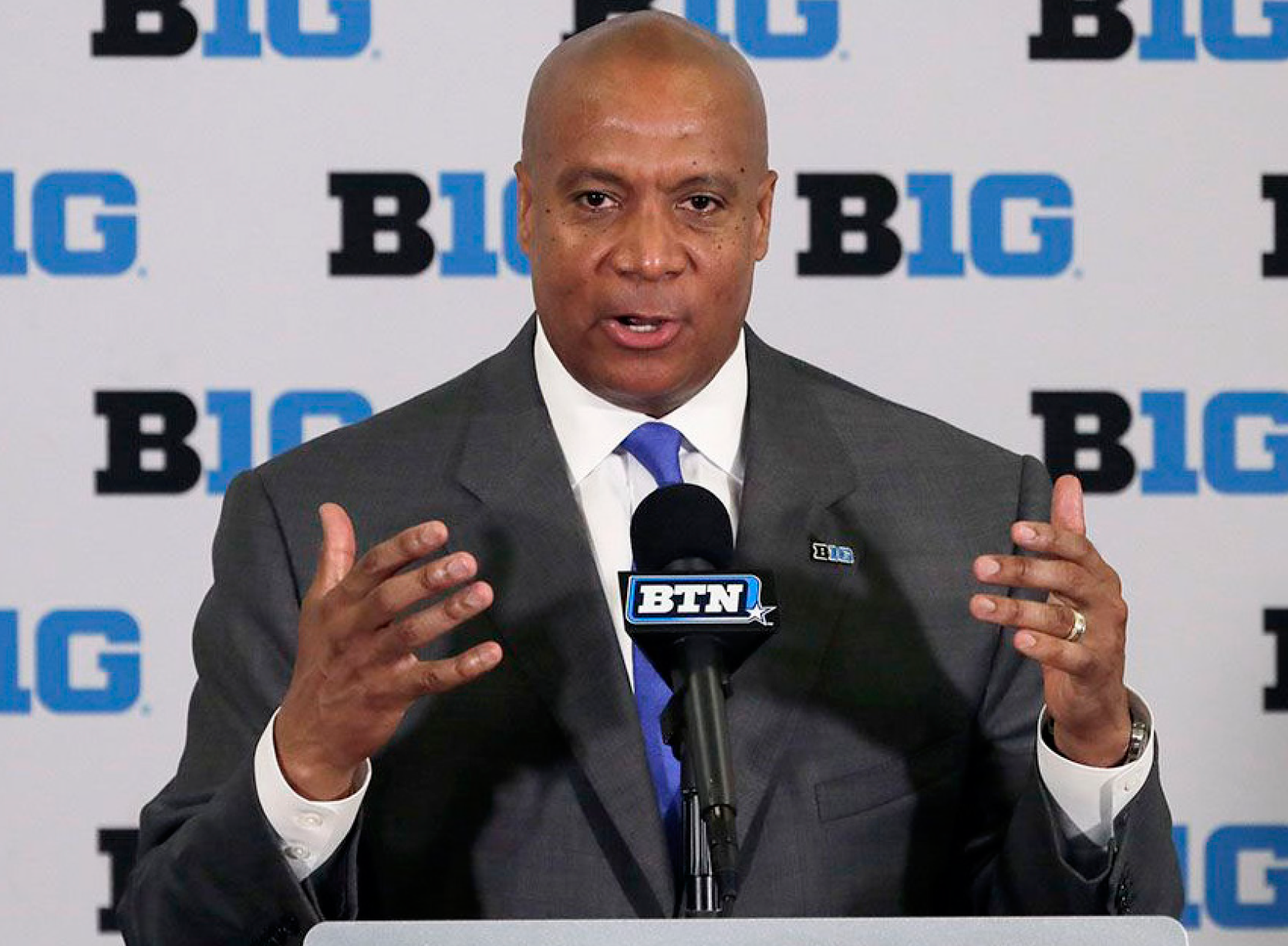
Following the announcement of the return of Big Ten football, the conference’s commissioner Kevin Warren and members of the return-to-competition committee addressed the decision during a press conference Wednesday morning [Sept. 16].
Kevin Warren, Big Ten Commissioner:
This really is a special day for the Big Ten. This is all about our student-athletes, their families, their coaches, their communities and our fans. Our only goal has been to allow our student-athletes to return to play safely.
What we wanted to do was to create an environment where we could work in a collaborative and transparent manner to make sure that when we return to sports competition that we should make sure we handle any and all questions and issues associated to make sure we have a healthy environment for our student-athletes.
Morton Shapiro, Northwestern President:
We meet a lot, I don’t know how many hours a week. This is the third year of my two-year term. This was all about safety. We met with doctors over and over again. We relied on a lot of medical experts, and once they convinced us that it was safe to play, we were unanimous in that decision.
Sandy Barbour, Penn State Vice President for Intercollegiate Athletics:
It’s great to be here and making this announcement I’m so excited for for our team and our coaches and our communities across across the Big Ten. There were five of us as athletic directors on on the medical subcommittee, and our role really was to kind of serve in a consultative and advisory capacity to our medical professionals and we’re fortunate to have such a great wealth of expertise within our 14 institutions. It was a great example of teamwork and collaboration and getting to yes, and providing answers to the president and chancellors to information as it related to their concerns to their uncertainty because this is and always has been about the health and safety of the student-athletes.
Dr. James Borchers, Ohio State football head physican:
We believe we have a return-to-competition and for it in a healthy and safe fashion. We can’t emphasize enough that were putting forward still requires accountability from everyone involved for our student-athletes to our coaches to staff to be doing the things to prevent getting this infection in our progress will be measured by their efforts, but also, we hope by the efforts to provide clean competition and a practice environment and to be able to be data-driven to be able to access appropriately to be able to provide repetitive surveillance through testing and ultimately to provide the heath and safety guidance that is needed to allow these student-athletes to return to competition.
Barry Alvarez, Wisconsin Director of Athletics:
Starting Oct. 23.24, and we will play eight games, with a unique championship week, where the east and west teams will match up. The top team in the East division will play the West division, the second-best team on both sides will face off, and so on.
Jim Phillips, Vice President for Athletics and Recreation:
We talked daily, basically with our incredible television partners of Fox, so that we were in alignment with not only football scheduling, but we were in alignment with Dr. Borchers’ and Sandy’s group. And in the end, it was this incredible teamwork that you’ve you’re hearing about that got us to this day certainly wouldn’t have happened without our presidents. But that’s kind of the rhythm and flow of what the last nearly 30 days have been like.
Kevin Warren:
We all have to realize this is a fluid situation. We always wanted to make sure we put the health and safety of our student-athletes at the forefront of our decisions. This is also a situation where we need to adapt. The world that we live in today, whether it’s in sports or any other area, we need to be able to adapt. And based upon the standards that were set by our chancellors and presidents from day one, we need to make sure that we create an environment that would allow student-athletes to participate in intercollegiate athletics in a healthy and safe environment and the standards that we needed,. We had to go to work, we had to be fluid. We need to show some flexibility, and once we reached that point, then we felt that we were comfortable to proceed forward, and to be able to create that environment, we were able to go forward.
So, this is really about looking forward. We understand the journey that we had to go through from from starting back in in early August, all the meetings that we had internally with our athletic directors and even our different task force and and just internally. But also realizing that one of the things about leadership, it’s important that you are in a perpetual process of gathering information, analyzing information, setting high standards, and also looking at each other to say that we now have met those standards for our student-athletes to participate.
Morton Shapiro:
The medical advice I relied on when I voted almost five weeks ago was that there was basically no chance we could do it safely and we weren’t going to have the testing and all the safety protocols. So, it was sort of, ‘Well, OK, we’re going to postponed the season, and let’s hope to have that in place the first weekend in January. And then medical opinion changed. There have been a lot of advances in terms of understanding the pandemic and myocarditis and the like, over the past five weeks. Paul Samuelson, the great economist, once was asked why he changed his mind, and he said, ‘When the facts change, my mind changes.’ The same thing will happen for you. The facts change, our minds change.
Dr. James Borchers:
We have continued to learn and explore the best options. There are some critical areas that we sough best expertise in and our ability to test consistently and uniformly among the conference and tot provide that was really important and we have been very comfortable with the idea that we’ll be able to provide daily rapid testing. There were issues around contract tracing that our testing now allows us to evaluate.
Sandy Barbour:
It’s been the message we’ve been delivering to our athletes since minute one in this pandemic. And that’s around their responsibility and obligation to their team, and frankly to their communities. And for the most part, our guys have on our football teams and across our athletic programs have done a tremendous job.
Barry Alvarez:
Our student-athletes, we’ll ask them to be leaders for the rest of our campus and our community and take the responsibility that they have to not only play, but to make our community and our campus a safe place.
Jim Phillips:
We’re fortunate to have one of our athletic directors, Gary Barta at Iowa,, on the playoff committee. And after conversations with him, there’s a real possibility. And it’s something that I know our student-athletes are really, really excited about with in the bowl structure. And it’s something that’s been connected with the Big Ten for a lot of years. So to play a regular season in a meaningful way to weave it in with our partners at Fox and ESPN, to do it under the lights that our student-athletes so enjoy doing and to have a culminate at the end of the year with the chance to play in the CFP and a chance to play in traditional ballgames is incredibly exciting.
Barry Alvarez:
Our athletes will be able to start practice immediately. We’re talking about how many hours right now. Our athletes have been working out, and we’ll have plenty of time to acclimate. Their conditioning should be good, and they should have plenty of time.
Dr. James Borchers:
The strategy is one where we’re trying to rapidly identify anyone that may have the virus and immediately remove them form their population. It’s similar to what you have heard form the Pac-12 with the use of rapid antigen testing those tests and their ability to detect those folks who are positive and then using confirmatory testing rather than just using testing.
Dr. James Borchers:
21-day period to return?
Out of an abundance of caution because of the need for our 14 institutions to feel responsible to provide information in a registry. You’ve seen the requirements for our cardiac protocol, if an athlete to test positive for COVID-19 viewpoint and if confirmed during this time period. At that point, our experts agreed that it needed to be at least 14 days from that positive test. At a minimum, before that cardiac testing was completed and evaluated by cardiology experts and that athletes clears, then there’s the recommendation that we had that any athletes who’s recovering from illness or injury needs a transition period.
Kevin Warren:
From a postponement standpoint, is that we needed to pause and you’ve heard many people talk about that. and so it’s really a blessing to be here today I’m just proud to be with a group of individual withing the Big Ten and I seriously understand what makes the Big Ten, we will take a leadership role, we’ll put the health and safety of our student-athletes.
How does Big Ten define community?
Dr. James Borchers:
The two most important metrics to us actually pertaining to our teams and those congregate groups, staffs, coaches, and teams, and that will be the test positivity rate for that team. And so, if we’ll be looking at those on seven-day rolling averages, we’ll be looking at those in the context of what’s going on in our university communities, our local communities, our state and regional data as well. But we’re going to be using that data to really drive us forward so that we understand specifically what’s going on within our teams, and how that compares to what’s going on within our communities.
And being able to be transparent about that data and why we’re able to move forward and so the the numbers that you see for this positivity rate will be reflected on our team test positivity rate, to 0-2 percent. For our green area, the cautionary of 2-5 percent and then a red area greater than 5 percent. And for our population positivity rate, that’s the team population positivity rate.
So again, 0-3.5 percent for green, 3.5-7 percent for caution, and then greater than 7.5 percent for red. And as we discussed with our experts, infectious disease epidemiology experts in these smaller groups, we believe that these standards are appropriately conservative, that allow us to provide a healthy and safe environment and to evaluate that environment moving forward. So those metrics are going to be available.
And one of the things that our committees mandated in our recommendations was that all 14 institutions would agree to share those metrics with the conference, and that those would provide some boundaries for us to be able to move forward. And certainly, there’s obviously decision-making that can happen at the local level with rates that are less than what we put forward. But when we reach those red rates, teams would be stopping their activities practice and game activities for at least seven days until we can reevaluate where they’re at.
Barry Alvarez:
What’s the primary focus for the final game?
The reason we came up with the eight, plus one, we wanted to make the season meaningful. Nine games was what we felt was very meaningful. And the division champions will play to be the champion of the Big Ten.
Safety of nine games in nine weeks?
From our protocol, we believe it’s a safe protocol and will allow us to complete the season. Our medial subcommittee said it was safe to proceed forward, and that if we need to adjust, we’ll adjust.
Kevin Warren:
From a communications standpoint, what i tried to personally, that we made sure when we have things to communicate, we did communicate. We’re in an environment right now where i wake up and try to be positive every day. A lot of the criticism that has been displayed, we’re passionate in the Big Ten. We have passionate student-athletes, we have passionate families, and we have passionate fans.
Sandy Barbour:
We are not going to permit fans in general. We are looking to see what we can do on a campus-by-campus basis to accommodate the families of our student-athletes as well as the families of staffs. as a conference, we’ve made decisions.
Kevin Warren:
This will be an expense of the Big Ten Conference. We’re putting our safety protocols and procedures in place and we thought it was important from a conference standpoint that we will be responsible for the structure of the agreement for testing.
Other sports?
The daily testing will also be conducted for all of our fall sports, which we thought was imperative for the heath and safety of all of our student-athletes.
We feel very comfortable that we have what we need to be from a testing standpoint and conduct those tests by the end of the month.
For four free issues of the print edition of Buckeye Sports Bulletin, no card required, sign up at the link here: https://www.buckeyesports.com/subscribe-4issue-trial/



